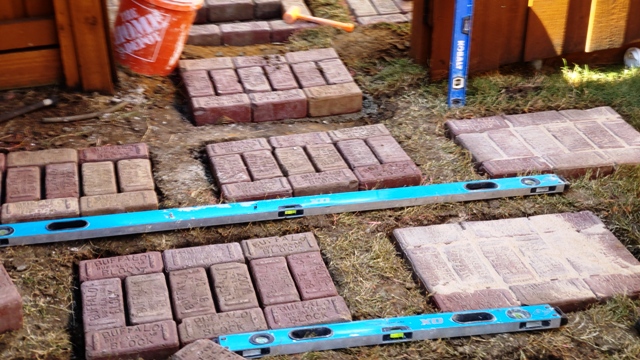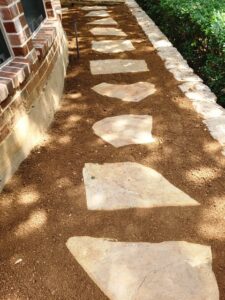
solvida
DIY Garden Pathway Ideas
“Pathway” is a general term referring to a means by which something can travel from one place to the next. Therefore, a garden pathway would be a path designed to facilitate travel throughout your garden or landscape. Garden pathways should be functional, made of materials that are easy to traverse, and take you from one point to the next. Garden pathways can also be affordable and beautiful, making it the perfect DIY project for a weekend. Read on to see our list of six DIY garden pathway ideas.

Decomposed Granite, Steel-Edging Pathway
Decomposed granite makes an excellent material for a garden path. As the name suggests, this material is the result of granite and its natural decomposition into smaller, sand-like particles. With a bit of water, decomposed granite hardens and compacts over time, making it a solid base for walking. We suggest installing at least 3-4 inches of decomposed granite and compacting it for a stable base. Decomposed granite is a fine material that will need to be kept separate from surrounding grass. There are unlimited options of lawn edging suitable for DIY installation out there. However, we suggest installing steel edging wherever needed to retain the decomposed granite.
Pea Gravel, Brick-Edged Footpath
Another excellent and very affordable base material for a garden path is pea gravel. Pea gravel is a small, rounded stone, approximately 1/8”-1/4” in a large array of colors, making it a fantastic option for building your own gravel pathway. Due to the small size, pea gravel should be installed to a depth of at least 2-3 inches. Pea gravel can be found by the bag at most hardware or garden stores. If you require larger quantities, you should have no problem finding it in bulk at any stone yard. Pea gravel will need to be kept separate from surrounding grass with an edging. We suggest pairing your pea gravel with brick. To make this garden footpath even more affordable, consider using any leftover brick you may still have left in the garage from your home builder.
Concrete Stepping Stones in Grass
The easiest way to make your own garden walkway would simply be to install stepping stones directly in the grass. One of the most affordable and readily available stepping stones would be made from preformed concrete. For a more custom look, you can create your own stepping stone shape or size with bagged concrete and a plastic stamp or mold. To hold up to consistent foot traffic, your stepping stone should be at least 2 inches thick.
Paver and Mulch Pathway
Another easy and affordable option for your DIY path would be to use mulch and pavers. Mulch is soft, light, and readily available most anywhere gardening supplies are sold, and there are many mulch alternatives as well. Because mulch is so lightweight, we suggest pairing it with pavers to serve as stepping stones along your walking path. A paver is simply a flat block of material that can be made from concrete, clay, or natural stone. Like any stepping stone on a walking path, it should be at least 2 inches thick.

Brick Path
Depending on how much time and material you have, your DIY garden path could use bricks to create unique stepping stones, or they can be used to create the entire pathway. Bricks are lightweight and can be installed in an endless number of patterns. Make sure to assemble the bricks on a level surface or set them in a base of concrete. Fill gaps between the bricks with a polymeric sand.
Flagstone, Steppable Groundcover Trail
Although it can take some time to fill in, one of the most beautiful garden pathways to install is made from natural groundcover plants with flagstone set in place for stepping stones. Take your time selecting groundcover plants. We suggest something evergreen, low-growing, and appropriate for the sun exposure your pathway will have. To create this garden pathway, make sure you start with a base of loose soil. Next, install your flagstone stepping stones. The flagstones should be at least 2 inches thick and placed approximately 12-18 inches apart. Finally, install your groundcover plants. Water your new plants as needed, and then watch it all come together as they grow.
There is no shortage of materials or ideas to create your own do-it-yourself garden pathway. What makes one pathway better than the other will be determined by material availability in your area, your budget, and what blends best with your surrounding landscape.

